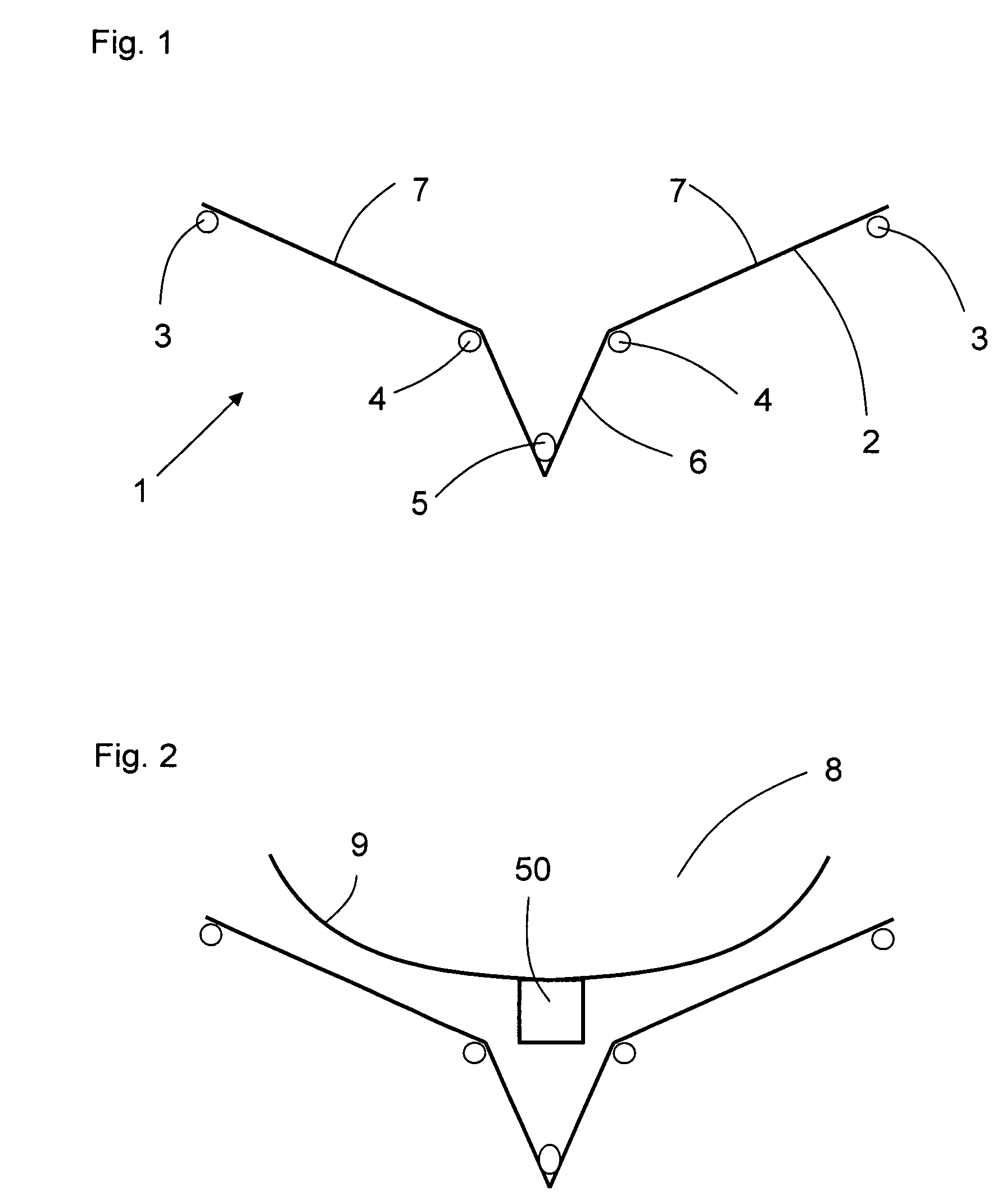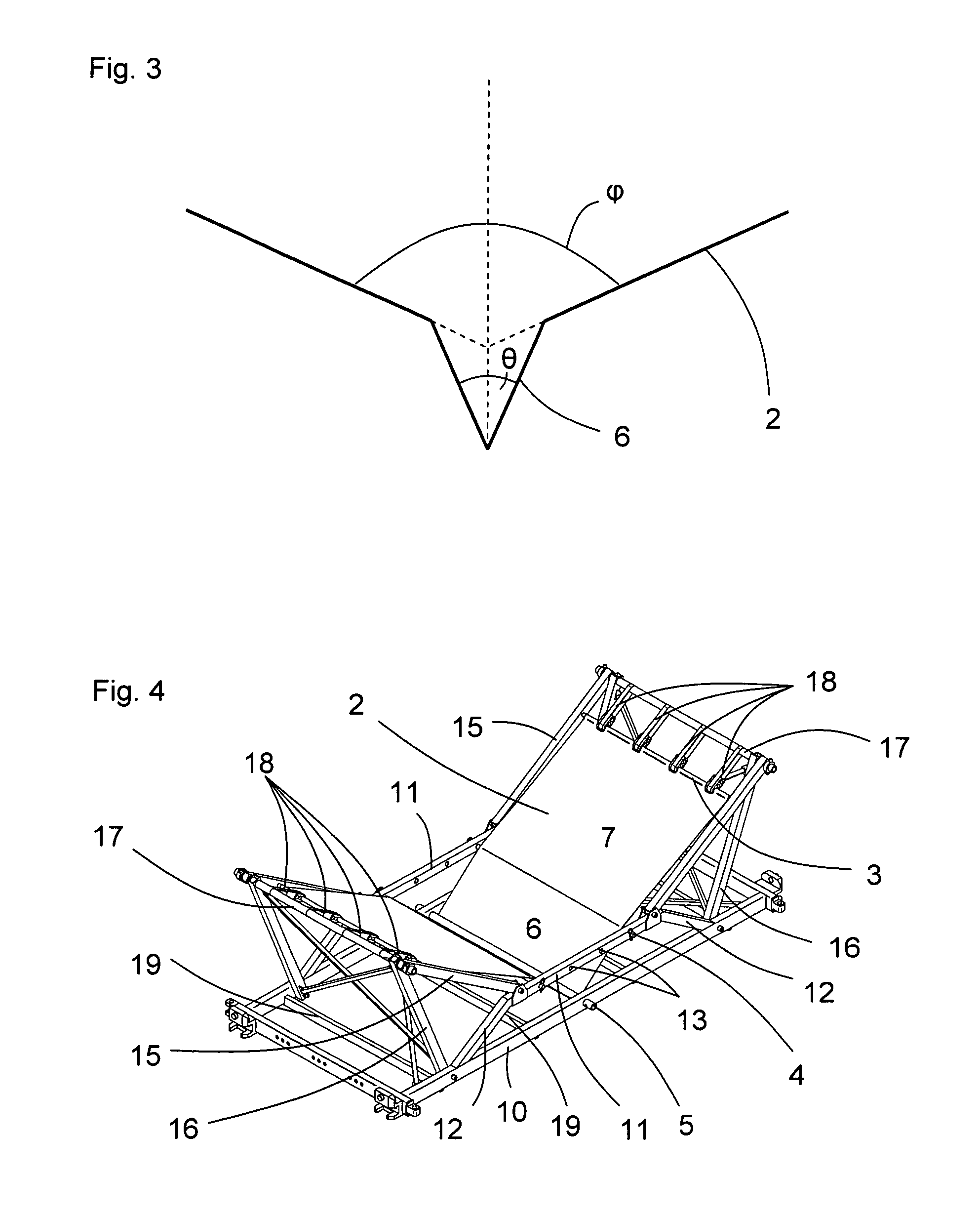Deceleration platform
a technology of deceleration platform and water tank, which is applied in the direction of containers, non-canopied parachutes, containers to prevent mechanical damage, etc., can solve the problems of too deep penetration into the water, and the difficulty of reducing the impact force of the water, so as to reduce the potential damage to the payload and the effect of smooth load delivery
- Summary
- Abstract
- Description
- Claims
- Application Information
AI Technical Summary
Benefits of technology
Problems solved by technology
Method used
Image
Examples
Embodiment Construction
[0029]In an example embodiment of the present invention, the deceleration platform is formed from a flexible fabric material which is stretched over the cross members of a rigid frame to form a deceleration sheet.
[0030]Deceleration sheet 1 shown in FIGS. 1 and 2 includes a flexible sheeting section 2 which is attached to a rigid frame (not shown). The flexible material can be of any suitable nature. Example materials include architectural textiles and rubber coated fabrics. The material of the rigid frame (not shown) is preferably rigid enough to provide a firm framework upon which the flexible sheet 1 can be mounted, and also light enough that the assembly is not of large weight. Such a large weight assembly would be uneconomical and potentially less effective in the present invention, as the increased mass of the frame will increase the force of impact of a platform dropped into a fluid.
[0031]The sheeting is tensioned by tubular elements 3 on each side of the frame. Any form of te...
PUM
 Login to View More
Login to View More Abstract
Description
Claims
Application Information
 Login to View More
Login to View More - R&D
- Intellectual Property
- Life Sciences
- Materials
- Tech Scout
- Unparalleled Data Quality
- Higher Quality Content
- 60% Fewer Hallucinations
Browse by: Latest US Patents, China's latest patents, Technical Efficacy Thesaurus, Application Domain, Technology Topic, Popular Technical Reports.
© 2025 PatSnap. All rights reserved.Legal|Privacy policy|Modern Slavery Act Transparency Statement|Sitemap|About US| Contact US: help@patsnap.com



